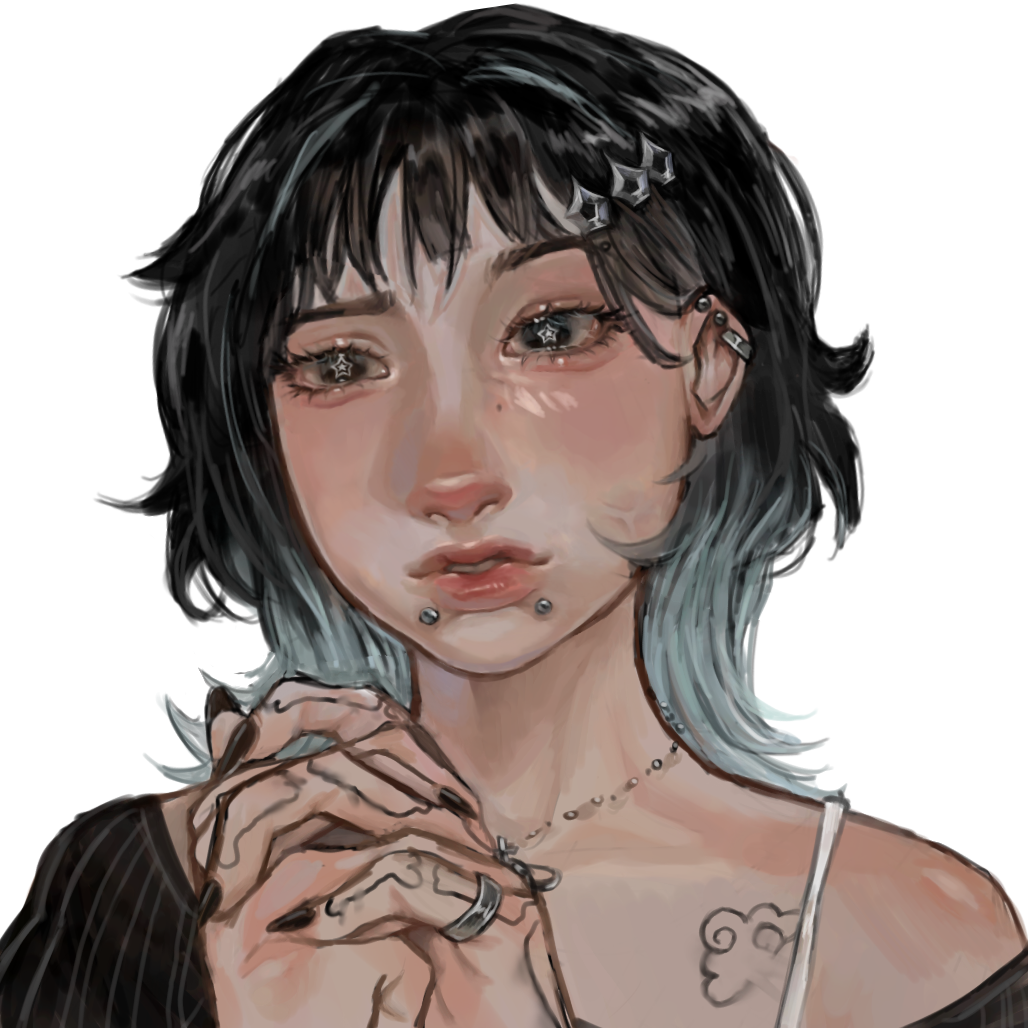Jelly Art Style - A Look At This Unique Digital Trend
There's a particular kind of digital artwork that has been getting quite a bit of attention lately, especially among those who spend time looking at art on social media platforms. It's often called "jelly art style," and it brings together a few different visual ideas to create something that really stands out. You might have seen it pop up on your feeds, perhaps on places like TikTok, where it has gained a fair amount of popularity, or even on Instagram, with artists like nilpuff and puririka mentioned as key examples. This distinctive way of making pictures has a soft, almost translucent feel to it, which, you know, gives it that "jelly" name.
This art style, in a way, takes inspiration from a few different places, blending elements that are quite interesting to observe. It seems to draw a little from the concept of the "uncanny valley," where things look almost human but not quite, creating a sense of something being a bit off. At the same time, it has a strong connection to cartoon styles often found in anime, yet it combines this with touches of realism in the finer points of the drawing. So, it's almost a mix of familiar and slightly unsettling, which makes it rather memorable.
For many who see it, this particular way of drawing has a very appealing quality. I personally think the art style is very cute, with its soft edges and sometimes almost dream-like feel. It's pretty fascinating how a style can capture so many different reactions, from people who absolutely adore it to those who, for whatever reason, might not feel the same way. There was, as a matter of fact, some discussion and, you know, a bit of upset about it at one point, with some people expressing negative feelings, possibly without much clear cause, before certain events involving an artist named puririkaa took place.
Table of Contents
- What Makes Jelly Art Style So Distinct?
- The Visual Characteristics of Jelly Art Style
- Where Does Jelly Art Style Find Its Home?
- Communities Embracing Jelly Art Style
- Why Did the Jelly Art Style Face Controversy?
- Understanding the Drama Around Jelly Art Style
- How Can One Begin Creating Jelly Art Style?
- Tips for Aspiring Jelly Art Style Creators
What Makes Jelly Art Style So Distinct?
When you look closely at pictures made in this art style, you'll notice some truly unique qualities that set it apart from other forms of digital illustration. It’s not just one thing, but a combination of elements that give it its signature appearance. The way faces and figures are depicted, for instance, can sometimes feel a bit unusual, almost like they are on the edge of what we expect to see. This feeling comes from a particular blend of influences, which really helps the style stand out from the crowd. It’s a very interesting mix, to be honest.
The Visual Characteristics of Jelly Art Style
The subjects within this art style, like characters in a drawing, often have a specific look that many people find quite noticeable. They can appear somewhat unwell, especially around the areas of their eyes. These parts of the face are frequently shown as looking a bit swollen, perhaps puffy, with a watery quality, and sometimes even conveying a sense of sadness. This particular portrayal of the eyes is a key part of what gives the art its distinct emotional pull. It's really quite striking.
Beyond the eyes, the overall appearance of the figures in the jelly art style combines what you might see in animated cartoons, like those from anime, with some very detailed, lifelike touches. So, while a character might have exaggerated features common in animation, there will also be moments of surprising realism in places you wouldn't expect. For example, the way light catches on a nose tip or the subtle shaping of lips can show a level of detail that feels quite true to life. This blending of cartoonish forms with realistic elements is, you know, a hallmark of this way of drawing.
The choice of lines and colors also plays a big role in defining the jelly art style. Some artists who create in this way have been given advice, like the suggestion that their lines might be a bit too strong or sharp. The idea is to use a gentler brush for outlining things, and to pick a lighter color for those outlines, especially in areas like the nose and around the eyes and mouth. This helps create that soft, somewhat translucent quality that is so characteristic of the style. It's not about making everything blurry, though; there are still parts that remain clear and defined, which is important for the overall effect.
Where Does Jelly Art Style Find Its Home?
This particular way of creating pictures doesn't exist in a vacuum; it lives and breathes within various online groups where artists and art lovers come together. These communities provide places for people to share their creations, ask for guidance, and simply talk about what they enjoy. It’s pretty cool how these digital spaces become gathering points for people who share similar passions. You'll find lots of discussion about different artistic approaches and, as a matter of fact, plenty of encouragement.
Communities Embracing Jelly Art Style
One place where you might encounter discussions about the jelly art style is within groups dedicated to specific digital art programs. For instance, there's a community for those who use ibispaintx, which has a good number of people interested in it, roughly sixteen thousand members. This group is a place where people can chat about topics related to that drawing tool, and it's a spot where you can feel free to ask questions about how to achieve certain looks, including perhaps how to get that jelly-like effect. It's a pretty open and welcoming space, apparently.
Beyond specific software groups, broader digital art communities also serve as hubs for styles like this. There's a very large online gathering for digital art enthusiasts, boasting over half a million members, about five hundred ninety-two thousand people, to be more precise. This is a general spot for talking about digital art, for news and written pieces on the subject, for how-to guides, for showing off finished pieces, and for getting advice. It's a place where, you know, you can see a wide range of artistic expressions, including, at times, the jelly art style.
And, of course, given the anime-like qualities of some jelly art style pieces, communities focused on anime-inspired drawing are also quite relevant. There’s a very big group dedicated to admiring artwork that follows the anime aesthetic, with nearly two million people in it, about one point nine million members. This group is all about appreciating drawings that fit that particular look. So, it makes sense that artists exploring the jelly art style, especially those with an anime influence, would find a home and an audience there. It's a very active place, too.
Why Did the Jelly Art Style Face Controversy?
Even popular and seemingly harmless art styles can sometimes find themselves at the center of a disagreement, and the jelly art style is, in some respects, no exception. What might seem like a simple matter of artistic preference can sometimes lead to broader discussions and even, you know, some heated moments among community members. It's a reminder that even in creative spaces, people can have very different views and reactions to things.
Understanding the Drama Around Jelly Art Style
There was a time when the jelly art style became part of a public discussion that involved some negative reactions, even before certain events unfolded with an artist known as puririkaaa. People were expressing dislike for it, perhaps without a clear reason, maybe just out of general sentiment. Then, a situation came up involving a young artist, reportedly around thirteen years old, who created drawings in the jelly art style and seemed to have followed a tutorial made by someone named riri. This particular instance, you know, brought things to a head.
Following this, riri made a video where she called the young artist a "tracer," which is a term that suggests copying someone else's work without proper credit or originality. She then proceeded to speak about the artist in a way that was not very kind. This public criticism from riri led to a reaction from her followers. So, because of her actions and what she said about the young artist, her fans, in turn, began to express their own negative opinions, which added to the overall tension surrounding the jelly art style and its creators. It was a pretty big deal, actually.
How Can One Begin Creating Jelly Art Style?
If you're someone who looks at this art style and thinks, "Hiii, so I want to have this style of art really bad," you're certainly not alone. Many aspiring artists feel drawn to its unique qualities and want to try their hand at making similar pieces. The good news is that, while it has a distinct look, there are some clear pointers you can follow to get started. It's not about finding some secret formula, but rather about understanding a few key techniques and tools.
Tips for Aspiring Jelly Art Style Creators
A common question for those wanting to try the jelly art style is about which brushes to use in their digital art program. The advice often points to using softer brushes, especially for the outlines or "lineart" of your drawings. If your current lines appear too strong or harsh, switching to a brush that creates a gentler mark can make a big difference. Also, it’s suggested to pick a lighter color for these outlines, rather than a very dark or black one. This helps achieve that delicate, almost see-through quality that defines the style. You can see this effect, for instance, on the tip of a character's nose or around their eyes and lips in existing jelly art style pieces. It really makes a difference, you know.
It’s also important to remember that while the style has a soft, somewhat diffused look, not everything is softly blurred. There are still areas within the drawing that remain clear and defined. This contrast between soft and sharp elements is what gives the jelly art style its depth and visual interest. So, while you might use gentle brushes and lighter colors for your main outlines, you'll want to make sure certain details pop out with more precision. It’s a balance, pretty much, between a diffused feel and clear forms.
To get a better idea of how to make your own jelly art style pieces, looking at existing examples is incredibly helpful. Artists like nilpuff on Instagram and puririka on TikTok are often mentioned as good places to find inspiration and see how the style is applied. By studying their work, you can start to pick up on the nuances of how they handle lines, colors, and the overall composition. It's a bit like learning by example, which is often the best way to grasp a new artistic approach. You can really get a feel for it, too.
So, whether you're just starting out with digital drawing or looking to try something new, the jelly art style offers a unique visual experience. It's a blend of cartoonish charm and subtle realism, often with a hint of something a little different, all wrapped up in a soft, appealing aesthetic. The discussions and communities around it show just how much people care about art and its various forms, even when things get a little complicated.

What do ya think of jelly art style attempt : arthelp

Tried the jelly artstyle! ༊࿐ ͎. 。˚ ° ⊹ ˚. | Fandom

I tried the jelly art style : DigitalArt